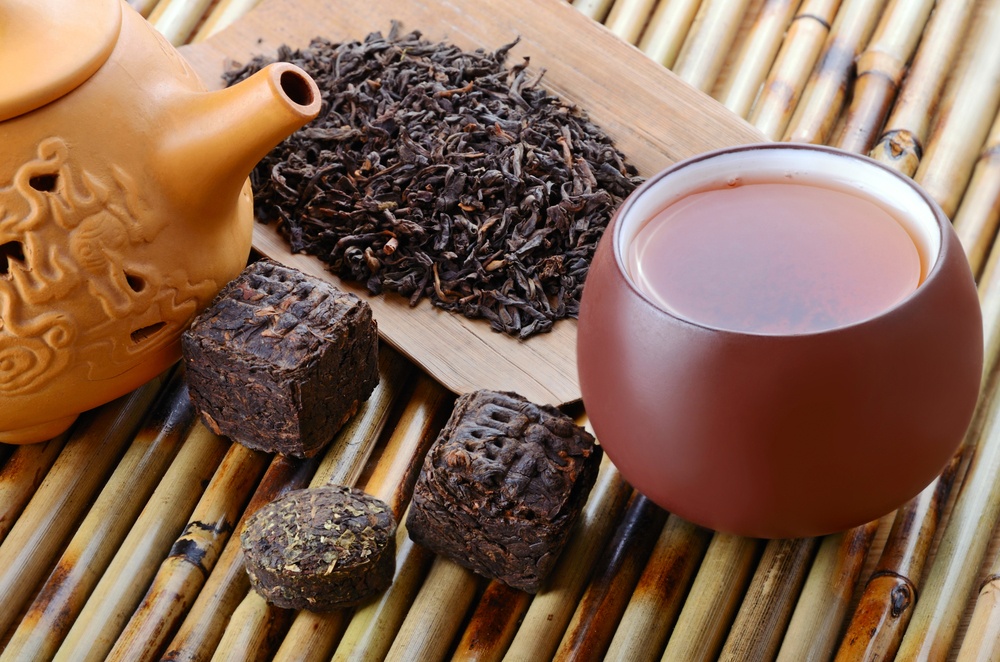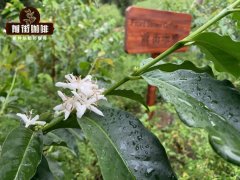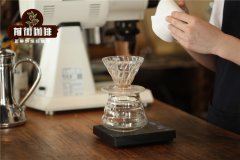What kind of Pu'er tea is good? How to buy Pu'er tea? Where is the best origin of Pu'er tea recommended by brand?
Pu 'er tea was already very famous during the Qing Dynasty in China. According to "Dianchi Erhai Annals" records: "Pu 'er tea is world-famous. It is produced in the six tea mountains of Pu 'er…covering an area of 800 li (1/2 km) in diameter. Thousands of people live in the mountains to produce tea. Merchants come to buy tea and ship it around the world." Sadly, China's national power declined and the tea drinking tradition disappeared. Pu 'er tea needs careful aging and seems to be forgotten. This cultural treasure has been dormant for nearly 100 years. We have to look back to our great-great grandparents 'generation to realize that Pu' er tea was considered a top-notch tea.
In the 1980s, Pu 'er tea was not popular, so it was sold to tea houses in Guangdong and Hong Kong as low-grade tea. This can be simply explained as almost no one understands or sees the value of Pu 'er tea, and even if high-quality Yunnan tea is available, no one will buy it. Due to the loss of tradition, the streets of vibrant Yiwu Tea Market have become quiet, with few traditional Pu 'er tea cakes pressing down on the famous tea growing hills. It wasn't until the release of Zhenchun Ya in 1996 and the popularity of Yi Trombone in 1999 that China's attention returned to Pu 'er. In the 1980s and 1990s, tea farmers still needed to survive and labor to provide the necessities of life. They have no choice but to sell the tea to tea factories to ferment, produce mature Pu 'er tea, and then sell it on the market. A small amount of high-grade tea leaves are pressed into raw Pu 'er tea cakes to meet the demand of Hong Kong tea vendors. It is placed in wet storage or aged and then disassembled and sold as bulk tea to satisfy the tea drinking tastes of Hong Kong residents.

Looking back 20 years ago, judging by today's Pu 'er tea craze, a few hundred cases of Pu' er tea sold to Hong Kong each year seems an incredibly small quantity. At the time, however, that was all the market could afford. In fact, there is no market at all. In the eyes of consumers, Pu 'er tea is still regarded as "smelly tea". Finally, the revival of Pu 'er culture is due to the arrival of mature Pu' er cake represented by red and blue stamp tea, coupled with the efforts of Taiwanese tea lovers and the gradual strengthening of China's strength, Pu 'er tea has restored its former glory and become an important part of daily necessities.
Having a pot of fine Pu 'er tea after dinner (no matter what kind of Pu' er tea) is enough to slightly relieve the pressure of modern people's daily life. Therefore, when economic conditions permit, Pu 'er tea lovers begin to seek diversified and high-quality tea products. This raises the question of how to choose Pu 'er tea.
Pu 'er style is varied
The revival and corresponding development of Pu 'er culture brought about many different styles. They can be roughly divided into: big factory, small factory, family workshop, large tree, plantation, pure breed, mixed mountain tea, dry storage, wet storage, natural aging, raw, mature, pressed cake,"Tuo" style, brick style, pine leaf, gift box, cardboard tube, bamboo tube, wooden box collectibles, souvenirs. When viewed together, the choices seem overwhelming. Although the above varieties are different, they are all Pu 'er tea. If you consider Pu 'er tea of different years, the variety of Pu' er tea has increased from nearly one thousand to more than ten thousand. On the face of it, this situation seems to offer too many options. However, practical options are few. You can't taste most of the tea leaves on the market, let alone all of them, to decide which type of tea is best for you.
Faced with a large number of Pu 'er tea varieties on the market today, how do new tea customers choose the most suitable tea? The question depends on whether the tea is intended for immediate consumption, aging, or investment. This has become an open question in the tea world. How do tea drinkers choose the best tea for themselves?
Today, Pu 'er tea products are as varied as the stars in the sky. Even if a teahouse were willing to brew all the tea at the right price for consumers to taste, you would not be able to brew all the tea in a few days and then buy the tea that best suits your taste. The task became even more daunting after discovering that there were thousands of teahouses on the market.

In fact, buying Pu 'er tea is for drinking (not for investment), just like buying any other everyday consumer product. Before buying, people are likely to consult others about their experiences. It's like buying a car. You can't drive every car on the market until you decide which one to buy. You are likely to determine your budget first and then look for references in magazines or websites. After comparing multiple models and looking at their appearance, you may seek the opinions of other people who have driven your favorite car. And then you might pull out a few models yourself for a test drive. Finally, after considering which car is the best deal, you place an order. Budgeting is essential. After the budget is set, you look for products within the price range and compare them by value. This is a very rational consumption behavior.
The experience of buying tea is similar. Comparable information can be obtained from tea shops or found in magazines or on the Internet. Tea drinkers can also learn about tea by participating in tea tasting, which reflects their love for Pu 'er tea. Basically, it's impossible to find the best, most appropriate tea without spending a lot of time each week going to teahouses and sipping tea. I hope this article can help inexperienced tea drinkers with some advice on how to identify and select the most suitable Pu 'er tea.
Know your taste
Some people like spicy flavors, while others like sweet ones. Others dislike both flavors and prefer milder ones. Pu 'er tea has many different flavors, and different people may like different teas. People who prefer to store dry tea may dislike tea stored in moist conditions, and vice versa. Some people may not like both. Therefore, when buying tea, it is important to know your taste preferences.
Pu 'er tea is a bit complicated, however, knowing your taste may not be enough. Because the taste of tea leaves changes over time, predicting the age of tea leaves is important. To some extent, it is also important to predict how your taste will change over time. Although the quality of tea may improve over time, you may discover after a few years that you no longer like tea stored 10 or more years ago.
An acquaintance of mine is a good example. When he first entered Pu 'er, he was attracted by the ripe tea and bought it in large quantities. He bought more than a hundred tea cakes, thinking that in the next few decades, he would also mainly drink mature Pu 'er tea. Who knows, after drinking Pu 'er tea for a few years, he will encounter high-quality aged raw Pu' er tea, suddenly found that aged raw Pu 'er tea has such a delicate flavor. Tasting the ripe tea he bought earlier. He realized that the tea he once thought highly of was no longer delicious. Is the quality of tea declining? Of course not. It's just that his tastes have changed. As time went on, his collection of ripe Pu 'er tea became less and less interesting.

Therefore, when buying Pu 'er tea, you need to look for something that will satisfy not only the people you drink Pu' er tea every day for years to come. You should also try to predict what you will like in 10 or even 20 years. I suggest that those who want to start collecting Pu 'er tea consider broadening their range. That is, buy some kinds of tea to prevent changes in taste. At the same time, consider going a little deeper. If you discover that you really like a particular tea, you may regret buying more.
At the most basic level, we drink tea for enjoyment. No one chooses to drink something unpleasant regularly, except perhaps drugs. to be similar. We spend money on flavored tea that makes us feel good.
However, it is not uncommon for people to force themselves to drink tea they do not like. What they once liked may not be what they like in the future. As I described above, if the tea leaves don't age well, or your tastes change, you may end up sitting on Mount Pu 'er, which doesn't really appeal to you (or maybe just isn't good). This is called "learning."
Important Notice :
前街咖啡 FrontStreet Coffee has moved to new addredd:
FrontStreet Coffee Address: 315,Donghua East Road,GuangZhou
Tel:020 38364473
- Prev

The lifespan of coffee trees how long can coffee trees live? What is a latte? Coffee cold knowledge
What is meant by cold knowledge? The code worker decided to explain CTRL C and CTRL V of du Niang first: cold knowledge refers to those knowledge and things that are biased, trivial and complicated. Cold knowledge can increase people's knowledge, broaden their horizons, enlighten their thinking and arouse a strong desire for knowledge. Du Niang has obviously explained it in great detail, but the code worker thinks that what we don't talk about very often is
- Next

What are the requirements of a rookie barista? what are the requirements for a barista to become a barista?
Such as the title. Many people think that baristas are relatively easy to get started in the catering industry. If we want to get into this business and achieve some success, we need to keep learning. The simple understanding is: diligence + hard work + luck many people have taken the path of baristas because they like coffee, and it is precisely because they have become baristas that they love coffee more. No.
Related
- Beginners will see the "Coffee pull flower" guide!
- What is the difference between ice blog purified milk and ordinary milk coffee?
- Why is the Philippines the largest producer of crops in Liberia?
- For coffee extraction, should the fine powder be retained?
- How does extracted espresso fill pressed powder? How much strength does it take to press the powder?
- How to make jasmine cold extract coffee? Is the jasmine + latte good?
- Will this little toy really make the coffee taste better? How does Lily Drip affect coffee extraction?
- Will the action of slapping the filter cup also affect coffee extraction?
- What's the difference between powder-to-water ratio and powder-to-liquid ratio?
- What is the Ethiopian local species? What does it have to do with Heirloom native species?

